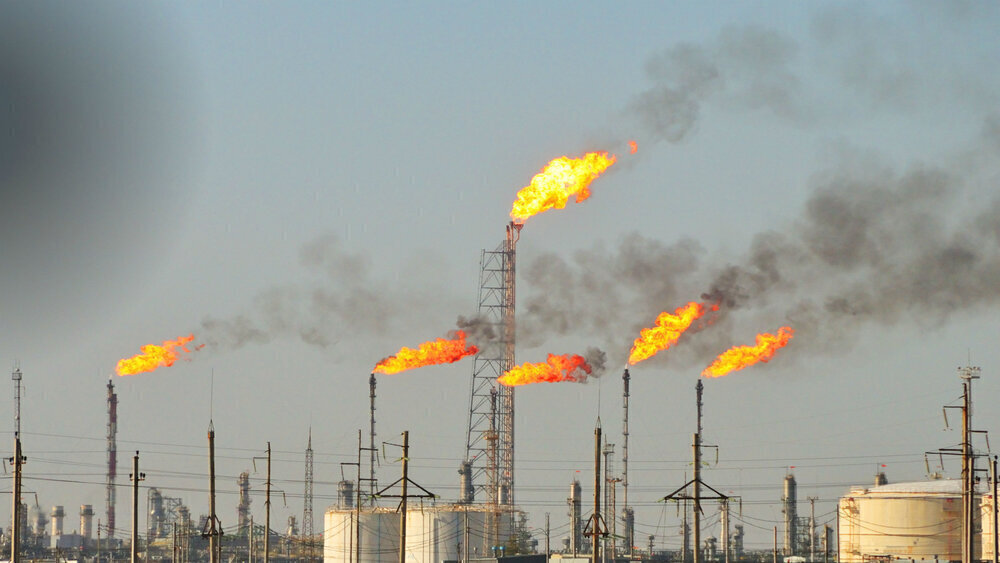Oil minister says gas flaring to end by 2029

TEHRAN – Iran’s Oil Minister Mohsen Paknejad said on Saturday the country aims to eliminate gas flaring by the end of the Iranian calendar year 1407 (March 2029), as one of the largest gas recovery projects in southern Ilam came online.
Speaking at the inauguration ceremony, Paknejad said the launch marks a major step toward capturing associated petroleum gas, known as “flare gas.”
The move, he added, will not only cut environmental pollution but also prevent the loss of hundreds of millions of dollars annually.
According to the minister, Iran’s Seventh National Development Plan sets a target to recover 16 billion cubic feet of flared gas by 2029, equal to about 44 million cubic meters per day.
Achieving this, he said, would end flaring permanently.
When President Masoud Pezeshkian’s administration took office last year, daily recovery capacity stood at about 330 million cubic feet, Paknejad said.
Since then, both short- and long-term projects have been launched to expand the figure.
Short-term measures, he noted, added around 9.2 to 9.3 million cubic meters per day, while auctions to sell flare gas to private investors lifted capacity by about 60 million cubic feet per day.
Another nine projects now under way are expected to recover a further 207 million cubic feet per day.
To encourage private participation, the Oil Ministry has tendered 36 investment packages with a potential capacity of 700 million cubic feet per day, Paknejad said.
The auctions are offered at a base price of zero, allowing investors to recover and use the gas for power generation or extracting higher-value products.
The minister outlined three major long-term projects: the $1.6 billion NGL 3100 complex in Dehloran, known in the industry as North Dezful; the NGL 3200 project to capture gas from West Karoun oilfields in Khuzestan; and a Persian Gulf NGL project designed to recover offshore flare gas.
He said additional facilities are also under way at the Bidboland and Marun gas plants and at 12 refineries of the South Pars gas complex.
With the first phase of NGL 3100 now operational, some 80 million cubic feet per day will be recovered from North Dezful. The project will reach a full capacity of 240 million cubic feet per day by early 2026.
Since last year, overall capacity has risen by about 280 million cubic feet per day and is expected to exceed 600 million cubic feet by the end of this year, Paknejad said.
The Ilam project includes NGL 3100, two compressor stations, a 100-megawatt power plant, and 350 kilometers of pipeline.
Thirty megawatts of the plant’s output will be supplied to the national grid, with the rest powering project facilities.
Gas recovered will undergo dehydration and sweetening to produce products including dry gas, ethane, LPG, sulfur, and condensates, some of which will go into the national grid and petrochemical feedstock, while heavier components will be shipped to Bandar Imam until a local petrochemical plant is ready.
Paknejad said more than 85 percent of NGL 3100’s equipment was supplied domestically.
The project created 4,500 jobs during construction and will provide 1,500 direct and 3,000 indirect jobs in operation.
He described the project as a symbol of self-reliance, national resource protection, and environmental responsibility.
“We hope by 2029 all flare stacks in the country will be extinguished,” Paknejad said.
EF/MA
Leave a Comment